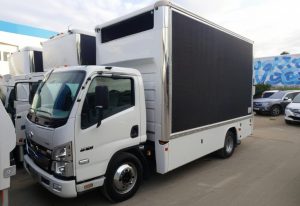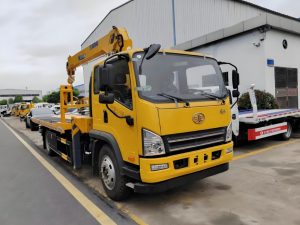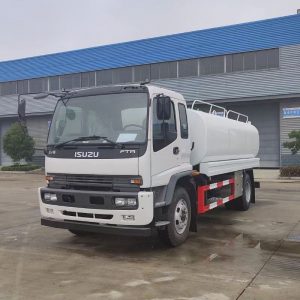Table of Contents
Toggle
Introduction
Bulk feed trucks are the unsung heroes of the agricultural world, ensuring that livestock are well-fed efficiently and effectively. These vehicles are specifically designed to transport large quantities of feed from production sites to farms, playing a crucial role in modern agriculture. Without them, the process of feeding livestock would be far more labor-intensive, costly, and time-consuming. Imagine trying to manually transport tons of feed daily—sounds exhausting, right?
Bulk feed trucks streamline this process, offering a reliable, automated solution that saves both time and money. These specialized vehicles come in various forms and sizes, tailored to meet the unique needs of different agricultural operations. From small family farms to large commercial enterprises, bulk feed trucks are indispensable tools that help keep livestock healthy and productive.
The Critical Role in Agriculture and Livestock Industry
In the grand scheme of things, bulk feed trucks contribute significantly to the efficiency and sustainability of the agriculture and livestock industries. They not only facilitate the timely delivery of feed but also ensure that it is done in a manner that minimizes waste and maximizes quality. This is particularly important in an industry where margins can be razor-thin, and the health of the livestock directly impacts profitability.
Furthermore, the advent of bulk feed trucks has allowed for greater scalability in farming operations. Farmers can now manage larger herds without a proportional increase in labor costs, thanks to these highly efficient vehicles. This scalability is crucial for meeting the growing global demand for meat and dairy products.
History and Evolution
The journey of bulk feed trucks is fascinating, reflecting broader trends in agricultural technology and mechanization. Initially, farmers relied on manual labor and rudimentary carts to move feed, which was both time-consuming and labor-intensive. Imagine the back-breaking work involved in shoveling tons of feed into carts and then hauling it to various locations—a task that required significant manpower and time.
Early Methods of Feed Transportation
In the early days, feed transportation was a laborious process. Farmers used simple wooden carts or wagons pulled by horses or oxen. These methods were inefficient and limited by the physical strength and endurance of the animals and humans involved. Feed was often transported in sacks or loose form, leading to significant waste due to spillage and contamination.
Technological Advancements
The industrial revolution brought about significant changes in agricultural practices, including feed transportation. The invention of the internal combustion engine paved the way for motorized vehicles, which were soon adapted for agricultural use. Early motorized feed trucks were rudimentary but represented a significant improvement over manual methods. These early trucks featured basic storage compartments and simple discharge mechanisms, allowing for more efficient transportation of feed.
Modern Bulk Feed Trucks
Today’s bulk feed trucks are marvels of engineering, featuring sophisticated systems that ensure precision and efficiency. Advances in materials science, hydraulics, and automation have all contributed to the development of modern bulk feed trucks. These vehicles now come equipped with advanced features such as computerized weighing systems, GPS tracking, and automated loading and unloading mechanisms.
Modern bulk feed trucks are designed to minimize waste and maximize efficiency. They feature sealed compartments to protect feed from contamination and weather conditions. Advanced discharge systems ensure precise delivery of feed, reducing spillage and waste. Additionally, many modern trucks are equipped with onboard sensors and control systems that monitor various parameters to ensure optimal performance.
Types of Bulk Feed Trucks
Bulk feed trucks come in various forms to meet different needs. The choice of truck depends on factors such as the type of feed being transported, the distance to be covered, and the specific requirements of the farming operation. Let’s explore some of the most common types:
Pneumatic Bulk Feed Trucks
Pneumatic bulk feed trucks use air pressure to move feed through pipes. These trucks are ideal for handling delicate materials such as pellets or powdered feeds. The pneumatic system ensures that the feed is transported gently, minimizing damage and maintaining its quality.
The key components of pneumatic bulk feed trucks include an air compressor, storage compartments, and a network of pipes and valves. The air compressor generates high-pressure air that pushes the feed through the pipes to the desired location. This system allows for precise control over the flow rate and delivery point, making it suitable for operations where accuracy is crucial.
Auger Bulk Feed Trucks
Auger bulk feed trucks utilize spiral screws (augers) to move feed from the storage compartment to the delivery point. These trucks are well-suited for handling denser materials such as grains or mixed feeds. The auger system provides a reliable and efficient method for transporting feed over short to medium distances.
The main components of auger bulk feed trucks include storage compartments, augers, and discharge chutes. The augers are powered by hydraulic or electric motors, which drive the spiral screws to move the feed. The discharge chutes allow for controlled delivery of the feed to specific locations.
Combination Trucks
Some bulk feed trucks combine both pneumatic and auger systems, providing versatility for handling various types of feeds. These combination trucks offer the best of both worlds, allowing farmers to transport different types of feed using a single vehicle. This versatility is particularly useful for large farming operations that require flexibility in their feeding processes.
Combination trucks feature separate storage compartments for different types of feeds, along with both pneumatic and auger discharge systems. The operator can choose the appropriate system based on the type of feed being transported and the specific requirements of the delivery site.
Components and Features
Modern bulk feed trucks are equipped with advanced features designed to optimize performance and ensure safe and efficient operations. Let’s take a closer look at some of these key components:
Storage Compartments
Storage compartments vary in size but are designed for maximum capacity and minimal waste. They are typically made from durable materials such as aluminum or stainless steel to withstand the rigors of daily use. These compartments are sealed to protect the feed from contamination by dust, moisture, or pests.
Some advanced storage compartments feature partitions that allow for multiple types of feed to be transported simultaneously. This is particularly useful for farms that require different feeds for different animals or stages of growth. Additionally, many compartments are equipped with sensors that monitor the level of feed, providing real-time data to the operator.
Discharge Systems
Discharge systems play a crucial role in ensuring smooth delivery of feed. Whether pneumatic or auger-based, these systems are designed to minimize spillage and ensure precise delivery. Pneumatic systems use high-pressure air to move feed through pipes, while auger systems use spiral screws to transport feed.
Advanced discharge systems may include features such as variable speed controls, allowing the operator to adjust the flow rate based on specific requirements. Some systems also incorporate automated controls that ensure consistent delivery regardless of variations in feed density or moisture content.
Weighing Systems
Weighing systems provide accuracy essential for proper feed management. These systems typically consist of load cells or strain gauges integrated into the storage compartments or discharge mechanisms. The weight data is transmitted to a central control unit, which displays real-time information to the operator.
Accurate weighing is crucial for ensuring that livestock receive the correct amount of feed. Overfeeding can lead to wasted resources and increased costs, while underfeeding can impact animal health and productivity. Modern weighing systems help farmers achieve optimal feeding rates by providing precise measurements.
Safety Features
Safety features are essential for ensuring secure operations. Modern bulk feed trucks are equipped with a range of safety mechanisms designed to protect both the operator and the vehicle. These features may include anti-lock brakes (ABS), stability control systems, and emergency shut-off valves.
Anti-lock brakes prevent wheel lock-up during sudden stops, enhancing vehicle control and reducing stopping distances. Stability control systems monitor vehicle dynamics and apply corrective measures to prevent rollovers or skidding. Emergency shut-off valves allow for rapid cessation of operations in case of a malfunction or safety hazard.
Additionally, many modern bulk feed trucks are equipped with advanced lighting systems that improve visibility during night operations or adverse weather conditions. Backup cameras and proximity sensors enhance maneuverability in tight spaces, reducing the risk of accidents.

Operational Efficiency
Efficiency is key in the operation of bulk feed trucks. These vehicles are designed to streamline the process of transporting and delivering feed, making it as quick and seamless as possible. Various advanced features and mechanisms contribute to this operational efficiency.
Loading Mechanisms
Loading mechanisms are crucial for reducing downtime and ensuring that the truck can be filled quickly and easily. Modern bulk feed trucks are equipped with advanced loading systems that allow for rapid filling of the storage compartments. These systems often include augers or pneumatic systems that can transfer feed from silos or storage bins directly into the truck.
Automated loading systems further enhance efficiency by minimizing the need for manual intervention. Sensors and control systems can monitor the loading process, ensuring that the compartments are filled to the optimal level without overloading. This not only speeds up the process but also reduces the risk of spillage and waste.
Unloading Mechanisms
Unloading mechanisms ensure precise delivery of feed, minimizing spillage and waste. Modern bulk feed trucks are equipped with advanced discharge systems that allow for controlled delivery of feed to specific locations. Pneumatic discharge systems use high-pressure air to move feed through pipes, while auger systems use spiral screws to transport feed.
Variable speed controls allow the operator to adjust the flow rate based on specific requirements. This flexibility ensures that feed is delivered at the right pace, whether it’s a slow, steady stream for delicate materials or a faster flow for denser feeds. Automated unloading systems can also be programmed to deliver feed at predetermined intervals, further enhancing efficiency.
Automation in Bulk Feed Trucks
Automation plays a significant role in enhancing the efficiency of bulk feed trucks. Modern vehicles are equipped with automated controls that streamline various aspects of their operation. These controls can manage everything from loading and unloading to monitoring vehicle performance and diagnostics.
GPS tracking systems provide real-time data on the truck’s location, allowing for optimized routing and scheduling. This ensures that feed is delivered on time, reducing delays and improving overall efficiency. Additionally, automated control systems can monitor various parameters such as feed levels, weight, and discharge rates, providing valuable data to the operator.
Automation not only enhances efficiency but also improves safety by reducing the need for manual intervention. This minimizes the risk of human error and ensures consistent, reliable performance.
Benefits of Using Bulk Feed Trucks
Using bulk feed trucks offers numerous advantages that go beyond simple transportation. These vehicles provide a range of benefits that contribute to the overall efficiency and effectiveness of agricultural operations.
Time and Labor Efficiency
One of the most significant benefits of using bulk feed trucks is the reduction in time and labor required for feed transportation. Manual methods of transporting feed are labor-intensive and time-consuming. Bulk feed trucks automate much of this process, allowing farmers to focus on other important tasks.
By reducing the need for manual labor, bulk feed trucks help lower labor costs and improve productivity. This is particularly important for large farming operations where time is a critical factor. With bulk feed trucks, feed can be transported and delivered quickly and efficiently, ensuring that livestock receive their nutrition on time.
Cost-Effectiveness
Cost-effectiveness is another major benefit of using bulk feed trucks. By optimizing feed delivery, these vehicles help reduce overall operational costs. Automated systems minimize waste by ensuring precise delivery, reducing spillage, and protecting feed from contamination.
Additionally, bulk feed trucks help lower transportation costs by allowing for larger quantities of feed to be transported in a single trip. This reduces the number of trips required, saving on fuel and maintenance expenses. Over time, these cost savings can have a significant impact on the profitability of agricultural operations.
Enhanced Feed Quality
Maintaining feed quality is crucial for ensuring the health and productivity of livestock. Bulk feed trucks are designed to protect feed from contamination during transit, ensuring that it arrives in optimal condition. Sealed storage compartments prevent exposure to dust, moisture, and pests, preserving the nutritional value of the feed.
Advanced discharge systems ensure precise delivery, minimizing waste and preventing contamination during unloading. This is particularly important for delicate materials such as pellets or powdered feeds, which can easily be damaged or contaminated if not handled properly.
By maintaining feed quality, bulk feed trucks help ensure that livestock receive the nutrition they need to thrive. This has a direct impact on animal health and productivity, ultimately contributing to the success of agricultural operations.
Maintenance and Care
Regular maintenance is essential for the longevity and optimal performance of bulk feed trucks. Proper care ensures that these vehicles operate efficiently and reliably, minimizing downtime and reducing the risk of costly repairs.
Regular Inspections
Routine inspections are crucial for identifying potential issues before they become serious problems. These inspections should include a thorough check of all key components, including storage compartments, discharge systems, weighing systems, and safety features.
During inspections, operators should look for signs of wear and tear, such as cracks or corrosion in storage compartments, leaks in pneumatic systems, or damage to augers. Any issues should be addressed promptly to prevent further damage and ensure safe operation.
Cleaning Procedures
Cleaning procedures are particularly important for preventing contamination and ensuring smooth operations. Storage compartments should be cleaned regularly to remove any residual feed or debris that could affect the quality of future loads. Discharge systems should also be cleaned to prevent blockages and ensure consistent performance.
Proper cleaning procedures may include using specialized cleaning agents or equipment designed for agricultural use. It’s important to follow manufacturer recommendations for cleaning to avoid damaging sensitive components or voiding warranties.
Common Issues and Troubleshooting
Common issues such as mechanical wear or system malfunctions can often be addressed through timely troubleshooting and repairs. Operators should be familiar with common problems that can arise with bulk feed trucks and know how to address them.
For example, if a pneumatic discharge system is not delivering feed properly, operators should check for leaks or blockages in the pipes. If an auger system is not functioning correctly, it may be necessary to inspect the spiral screws for damage or obstructions.
Having a well-stocked inventory of spare parts and tools can help minimize downtime by allowing for quick repairs. Additionally, operators should have access to technical support or service providers who can assist with more complex issues.
Environmental Considerations
As with any large vehicle, environmental impact is a concern for bulk feed trucks. However, modern designs and technologies are helping to mitigate these impacts through improved fuel efficiency, reduced emissions, and sustainable practices.
Emissions and Fuel Efficiency
Emissions are a major environmental concern for bulk feed trucks, particularly those powered by diesel engines. However, advances in engine technology are helping to reduce emissions and improve fuel efficiency. Modern engines are designed to meet stringent emissions standards while delivering optimal performance.
Alternative fuels such as biodiesel or electricity offer eco-friendly alternatives to traditional diesel engines. Electric bulk feed trucks produce zero emissions during operation, making them an attractive option for environmentally conscious farmers.
Fuel efficiency is another important factor in reducing environmental impact. Efficient engines consume less fuel per mile traveled, reducing overall emissions and lowering operating costs. Additionally, optimized routing and scheduling can help minimize fuel consumption by reducing unnecessary trips or idling time.
Noise Pollution
Noise pollution is another environmental consideration for bulk feed trucks. Loud engines or discharge systems can contribute to noise pollution, affecting both operators and nearby residents or wildlife.
Modern bulk feed trucks are designed to operate more quietly than their predecessors. Advanced engine designs reduce noise levels without compromising performance. Additionally, many pneumatic discharge systems are equipped with noise-reducing features such as mufflers or insulated pipes.
Reducing noise pollution not only benefits the environment but also improves working conditions for operators by creating a quieter, more comfortable workspace.
Sustainable Practices
Sustainable practices contribute to reducing the environmental footprint of bulk feed trucks. Regular maintenance ensures that vehicles operate efficiently without unnecessary emissions or waste. Proper disposal or recycling of used parts and materials also helps minimize environmental impact.
Efficient routing and scheduling practices reduce fuel consumption by optimizing travel distances and minimizing idle time. This not only lowers emissions but also reduces wear on vehicles, extending their lifespan.
Future Trends and Innovations
The future of bulk feed trucks looks promising, with several exciting trends and innovations on the horizon. As technology continues to advance, these vehicles are set to become even more efficient, sustainable, and user-friendly.
Electric and Hybrid Models
One of the most significant trends in the automotive industry is the shift towards electric and hybrid vehicles, and bulk feed trucks are no exception. Electric bulk feed trucks offer numerous benefits, including zero emissions during operation, reduced noise pollution, and lower operating costs. These eco-friendly alternatives to traditional diesel engines are gaining traction as farmers seek to reduce their environmental footprint.
Hybrid models, which combine electric motors with traditional internal combustion engines, offer a transitional solution. These vehicles can operate in electric mode for short distances or low-speed operations, switching to the combustion engine for longer trips or higher loads. This flexibility provides a balance between sustainability and performance.
Smart Technology Integration
The integration of smart technology is set to revolutionize the operation of bulk feed trucks. Advanced GPS tracking systems provide real-time data on the truck’s location, allowing for optimized routing and scheduling. This ensures that feed is delivered on time, reducing delays and improving overall efficiency.
Automated control systems monitor various parameters such as feed levels, weight, and discharge rates, providing valuable data to the operator. These systems can also automate many aspects of the truck’s operation, reducing the need for manual intervention and minimizing the risk of human error.
Real-time data analytics allow farmers to make informed decisions based on accurate, up-to-date information. For example, operators can track feed usage patterns, identify inefficiencies, and adjust feeding schedules accordingly. This level of insight helps optimize feed management and improve overall productivity.
Improved Materials and Designs
Advances in materials science are leading to the development of stronger, lighter, and more durable bulk feed trucks. New materials such as high-strength aluminum alloys or composite materials offer improved resistance to wear and corrosion while reducing the overall weight of the vehicle. This results in better fuel efficiency and longer lifespan.
Innovative design features are also enhancing the performance and usability of bulk feed trucks. For example, modular storage compartments allow for easy customization based on specific needs. Ergonomic controls and interfaces improve operator comfort and reduce fatigue, contributing to safer and more efficient operations.
Enhanced Safety Features
Safety remains a top priority in the design of bulk feed trucks. Future models are likely to incorporate even more advanced safety features to protect both operators and the vehicle. These may include enhanced stability control systems, collision avoidance technology, and advanced braking systems.
Proximity sensors and backup cameras improve maneuverability in tight spaces, reducing the risk of accidents. Automated emergency shut-off systems can quickly halt operations in case of a malfunction or safety hazard. These features not only enhance safety but also contribute to the overall reliability of the vehicle.
Autonomous Bulk Feed Trucks
While still in the early stages of development, autonomous bulk feed trucks hold significant potential for the future. These self-driving vehicles could further streamline feed transportation by eliminating the need for human operators. Advanced sensors, cameras, and artificial intelligence systems would enable autonomous trucks to navigate complex environments and perform tasks with high precision.
The development of autonomous bulk feed trucks faces several challenges, including regulatory hurdles, technological limitations, and concerns about safety and reliability. However, ongoing research and development efforts are likely to address these challenges over time, paving the way for widespread adoption of autonomous agricultural vehicles.
Conclusion
In conclusion, bulk feed trucks are indispensable in the agricultural sector, providing efficient, cost-effective, and reliable transportation of livestock feed. These specialized vehicles have evolved significantly over the years, incorporating advanced features and technologies that enhance their performance and usability.
The benefits of using bulk feed trucks are numerous. They save time and labor by automating feed transportation processes, reduce operational costs through optimized delivery systems, and maintain feed quality by protecting it from contamination. Regular maintenance and care ensure their longevity and reliability, while sustainable practices help minimize their environmental impact.
Looking ahead, the future of bulk feed trucks is bright with several exciting trends and innovations on the horizon. Electric and hybrid models offer eco-friendly alternatives to traditional diesel engines. Smart technology integration provides real-time data and automation capabilities that enhance efficiency. Advances in materials and designs improve durability and performance, while enhanced safety features protect both operators and vehicles.
The potential for autonomous bulk feed trucks represents a significant leap forward in agricultural technology, promising even greater efficiency and precision in feed transportation.
As technology continues to advance, bulk feed trucks will undoubtedly play an increasingly important role in modern agriculture. By embracing these innovations, farmers can optimize their operations, improve productivity, and contribute to a more sustainable future.







